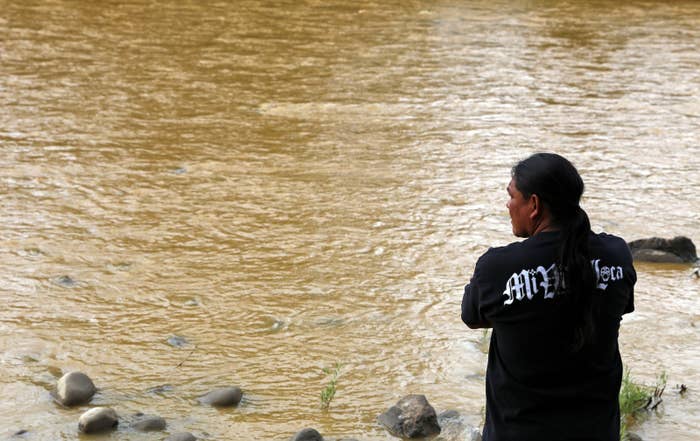
The mine blowout that turned a Colorado river a sickly orange for several days over the summer was caused by the Environmental Protection Agency team working on a clean-up project, according to an independent report by government investigators.
The Department of Interior's Bureau of Reclamation on Thursday delivered its report on the Gold King Mine incident to the EPA, summarizing how the spill was caused and offering recommendations to prevent future disasters. The failures at Gold King Mine show larger issues within the procedures the government uses to remediate abandoned mines, the report stated.
"[We] found that the conditions and actions that led to the Gold King Mine incident are not isolated or unique, and in fact are surprisingly prevalent," investigators wrote.
EPA spokeswoman Nancy Grantham said in a statement the agency will carefully review the report along with its own internal investigation.
"This report, in combination with the findings of EPA’s internal review of the incident, will help inform EPA’s ongoing efforts to work safely and effectively at mine sites as we carry out our mission to protect human health and the environment," she said.

According to the Associated Press, thousands of mining tunnels in the western U.S. are filled with the same contaminated sludge. Government authorities have struggled with clean-up efforts for years, and many waterways have been contaminated as the old mines' contents seep out.

In spite of the serious nature of the issue, the investigators found there are few requirements about how a clean-up should be managed. Clean-up efforts often focus on environmental issues with "little appreciation for the engineering complexity of some abandoned mine projects that often require, but do not receive a significant level of expertise," the report stated.
Regarding the Gold King Mine, the report said the EPA team guessed the water levels within the mine tunnel were at about the same height as the seepage coming through a blocked-up portal. In reality, the water levels were higher and pressurized, as if against a dam.
"This error resulted in development of a plan to open in the mine in a manner that appeared to guard against blowout, but instead led directly to the failure," the report stated.
The error could have been corrected if the team had used a drill rig to bore into the mine from above to check the water levels — a technique used in a another mine clean-up nearby.
"Although this was apparently considered at Gold King, it was not done," the report said. "Had it been done, the plan to open the mine would have been revised, and the blowout would not have occurred."
The EPA responded that the site conditions at Gold King Mine made this kind of drilling difficult.
"The Review Team identified technical challenges, safety, timing, and cost as factors in considering this technique—and also identified the steepness and instability of slopes at the site as a key safety consideration," Grantham said.

The report did not detail communication and decision-making within the EPA to assign blame. The technical implications, however, were clear, investigators said.
"The incident at Gold King Mine is somewhat emblematic of the current state of practice in abandoned mine remediation," the report stated.
In addition to miscalculating water levels, the report said the EPA team failed to analyze the consequences of a potential failure as well as how their work could affect the local groundwater system.
After the blowout, contaminated water moved as a plume through the Animas River as it traveled into New Mexico and Utah, toward Lake Powell. Residents were urged not to drink or come into contact with the water.
River closures caused economic hardship for farmers as well as recreation businesses. The contamination didn't appear to have immediate effects on wildlife, but officials acknowledged that sediment could resurface in coming years.
